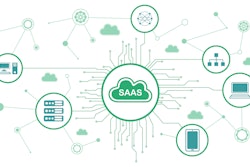
As companies look to improve their safety processes and efficient methods for logging incidents, they are turning to environmental health and safety (EHS) software as a critical tool to reduce the volume of safety incidents. In fact, the EHS software market is projected to grow by CAGR 6.7% over the next 10 years and reach revenues of $2.2 billion in 2034, according to ABI Research.
“Safety is a component of companies’ environmental, social, and governance (ESG) reporting. As a board-level requirement, companies need to show improvement in safety and a whole host of other metrics. These metrics can trigger an improved culture around safety and cascade throughout the company. However, paper-based data collection persists in many industrial and manufacturing plants. EHS software enables customers to gather data, analyze it to provide a baseline, and track progress with visualization tools,” says Michael Larner, distinguished analyst at ABI Research.
Key takeaways:
- The chemical industry was one of the first verticals to appreciate the importance of improving processes to ensure safety as any missteps can have dramatic consequences. However, spending in the oil and gas industry (CAGR 7.0%) and the mining industry (CAGR 7.1%) shows that these sectors are catching up.
“Safety professionals are no longer the sole users of EHS software. Innovations such as capturing images via a mobile device's camera, annotating them, and logging potential risks encourage and empower more staff members to embrace improving safety at their facility,” Larner says.



















